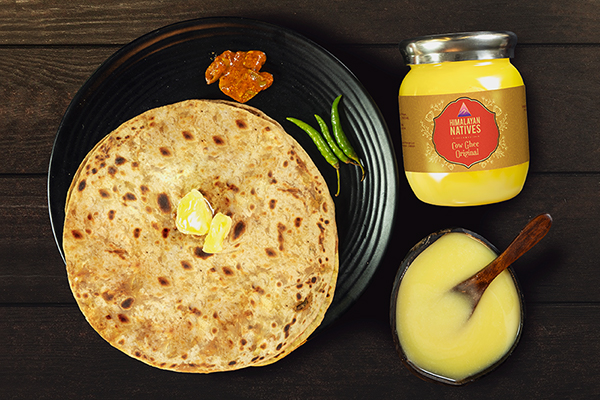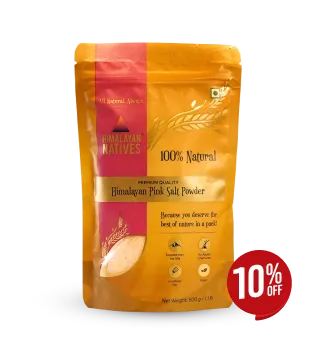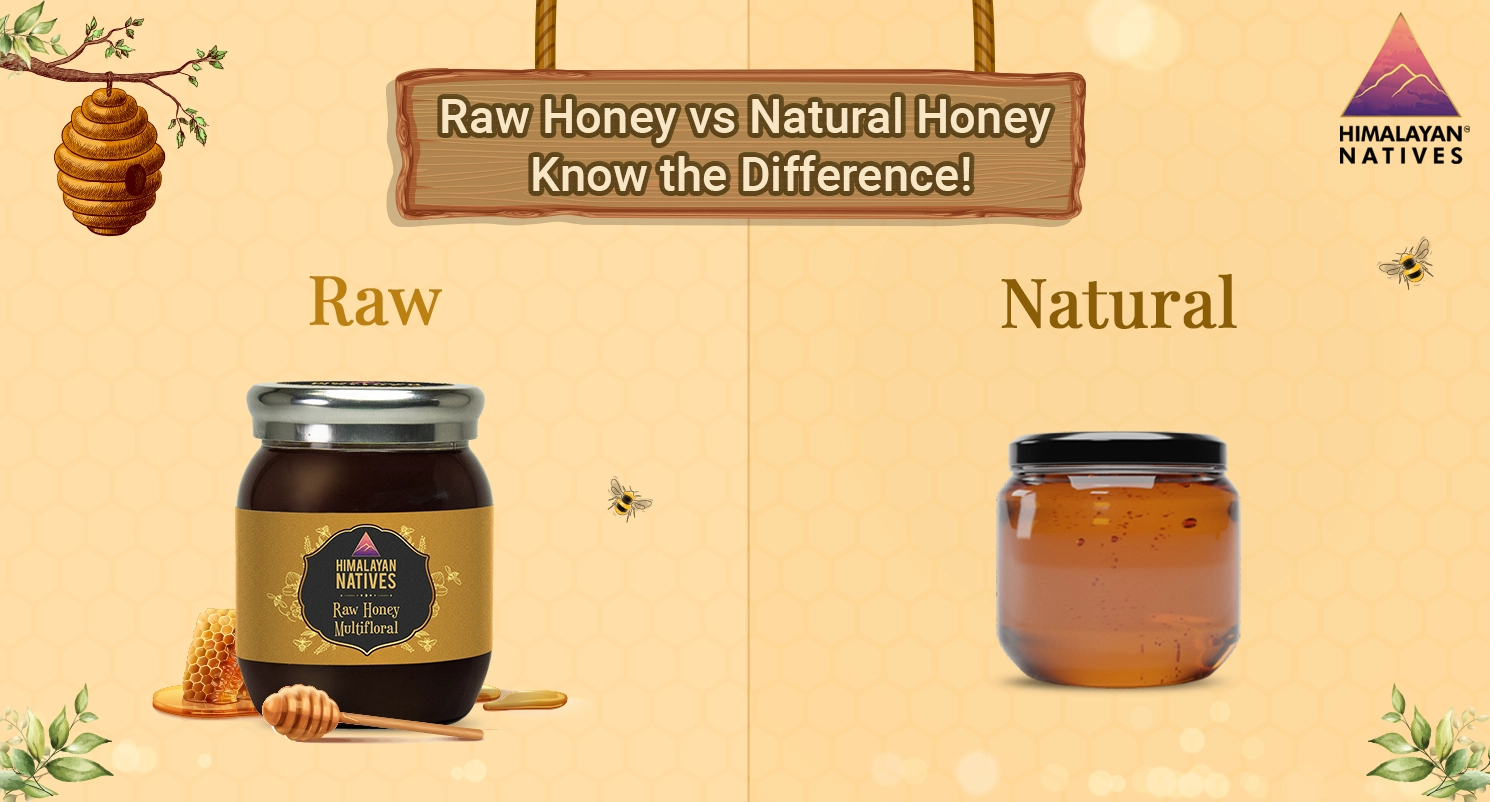
Honey has been used for centuries in Ayurveda for its medicinal properties. In India, honey has cultural and traditional significance and is considered a symbol of purity and prosperity.
With so many varieties of honey available in the market, it can be confusing to know which one to choose, more importantly which one is safe to consume.
In this blog, we will discuss the difference between Raw honey and natural honey. And why you should choose Raw Multifloral Honey over other types of honey.
What is Honey made of?
It's likely that you're aware of the key component essential in producing honey - flowers.
A single colony of bees can visit up to 50 million flowers daily, and a colony can have as many as 60,000 bees. These creatures have earned the nickname "busy bees" for a reason!
Now, honey is a Natural Sweetener made by bees from the nectar of flowers that are native to their surroundings, which they collect and store in their hives. Throughout their lifespan, bees perform various predefined roles, based on their age. In order to produce honey, worker bees will travel up to 5km in search of flowers and their nectar. Typically, they will visit between 50 to 100 flowers on each trip.

The process of making honey starts when bees collect nectar from flowers using their long, tube-like tongues. The nectar is then stored in the bee's honey stomach (a pouch-like structure called the Crop), where enzymes break down the complex sugars into simpler forms.
The honey bee possesses a special ability to convert the intricate sugars present in the nectar of flowers into simpler sugars that are less prone to crystallization.
The house bees then take the nectar to the bee hives and store them in the hexagon-shaped beeswax honey cells. The nectar is then dried out with the honey bee wing’s warm breeze that turns it into honey.
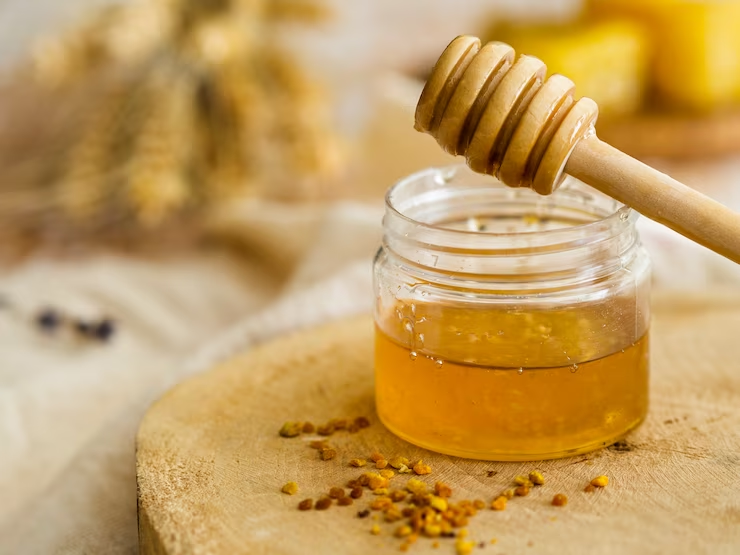
The ingredients of honey vary depending on the type of flowers that the bees collect nectar from. Honey can contain a variety of sugar, including glucose, fructose, and sucrose.
It also contains small amounts of proteins, vitamins, and minerals. One of the most important components of honey is water. Freshly made honey can contain up to 80% water, but this decreases as the honey matures and becomes thicker.
What are the Different Types of Honey Available?
Before we dive into the difference between raw and natural honey, let's first understand the different types of honey available in the market.

Raw honey is unprocessed, unheated, and unpasteurized honey straight from the beehive. It is extracted by crushing the honeycomb and straining the honey, without any processing or addition of chemicals. Raw multifloral honey comes from the nectar of different flowers, and the bees are free to roam and collect nectar from various sources. This results in a unique blend of flavours and nutrients.
Natural Honey
Natural honey, on the other hand, undergoes minimal processing, and it may or may not be heated or pasteurized. Natural honey may also contain added sugar or other ingredients.
Pure Honey
Pure honey is a term that is often used interchangeably with natural honey. However, pure honey usually refers to honey that has not been adulterated with any other substance.
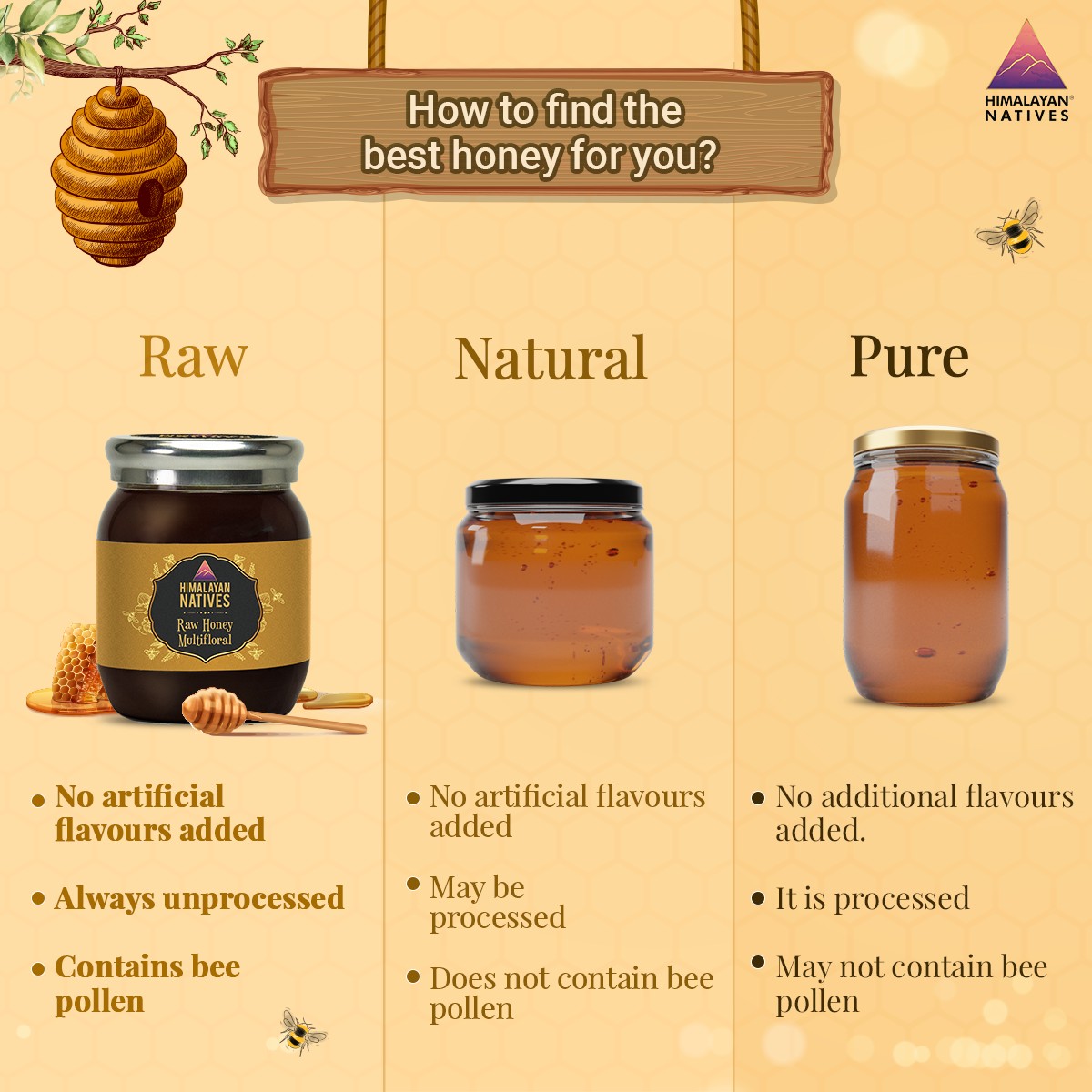
Health Benefits of Raw Multifloral Honey
Raw multifloral honey has several health benefits. It is rich in vitamins, minerals, and antioxidants. Some of the many health benefits include:
Boosts immunity
Helps with digestion
Reduces inflammation
Promotes wound healing
Soothes sore throat and cough
Provides energy
Labeling Standards of Honey
It is important to note that not all honey is made & sourced in the same way. Some honey brands may contain added sugars or syrups. When buying honey, it is important to read the label carefully, know about their sourcing and processing methods and choose the one that’s Raw & unadulterated.
Where to Buy Raw Multifloral Honey?
Raw Multifloral Honey is not something that’s made & sourced from casual beekeepers. Look for a brand that is authentic and sources their honey from the finest Beekeepers across India who only adapt ethical and natural bee farming practices. We at Himalayan Natives believe that the real strength lies in Nature, that is why we extract and source our Honey cruelty free, without harming our wild bees. We also strongly believe in providing our customers with only natural and unadulterated food products that are safe to consume and full of health benefits.
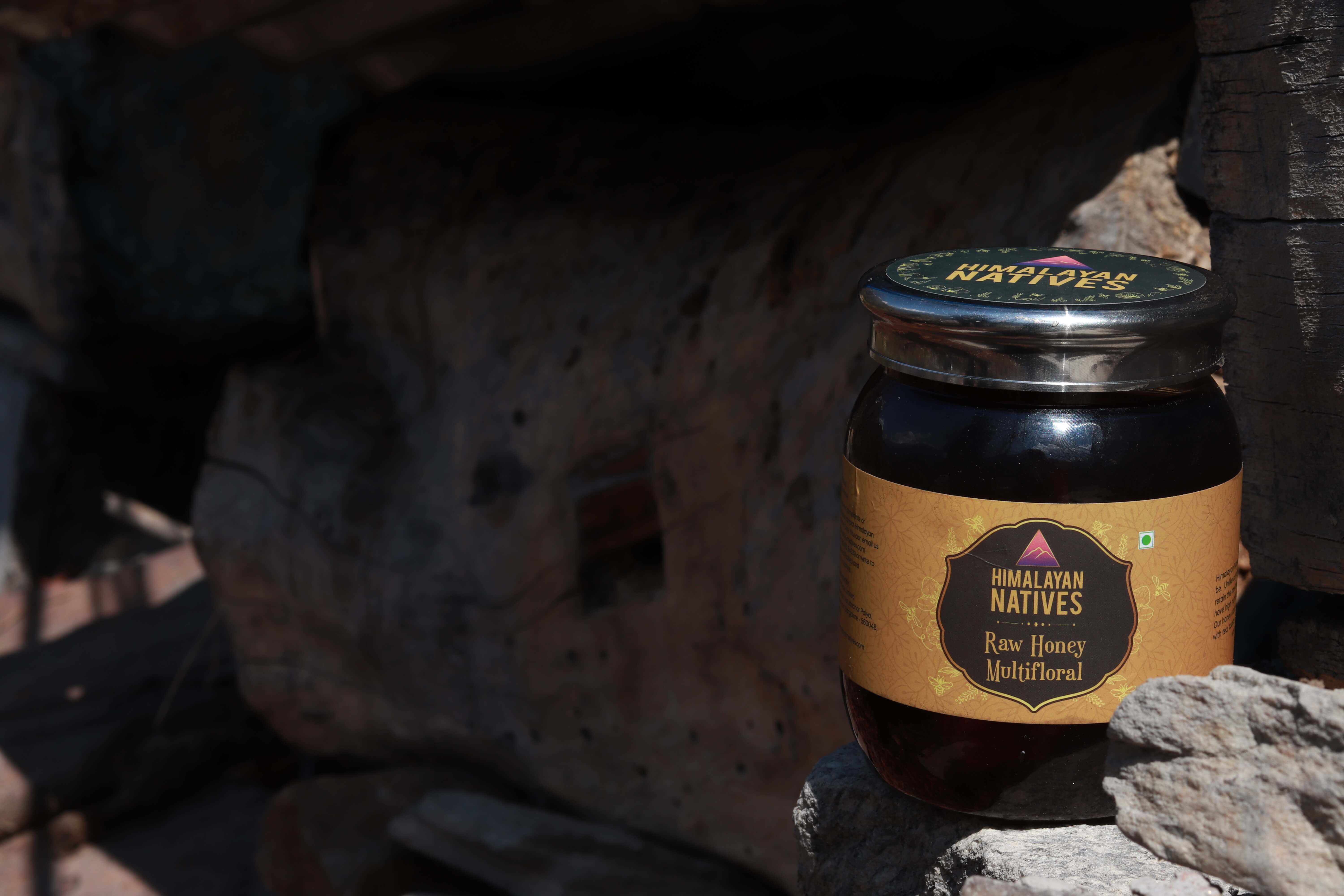
Frequently Asked Questions (FAQs):
1. Is Raw Honey good for you?
Answer: Yes, raw honey is good, as it is unprocessed, has zero added sugar and contains a higher amount of beneficial nutrients compared to other types of honey. It is not only safe to consume but also has many health benefits including anti-inflammatory and antioxidant properties.
2. What is the difference between raw honey and natural honey?
Answer: Raw honey is unprocessed and contains added nutritional benefits, while natural honey may be pasteurized and may not have the same level of nutrients.
3. Where can I buy Raw Honey?
Answer: You can get your Jar of Raw Multifloral Honey from Himalayan Natives. We ensure that our customers get the most premium and natural quality food products straight from nature's lap to your doorstep.
4. Can Ṛaw Honey help with allergies?
Answer: Yes, raw honey can potentially help with allergies. It contains small amounts of pollen from various plants, and it's believed that consuming small amounts of this pollen through raw honey can help the body build up immunity to it, leading to a reduction in allergy symptoms over time. Although, it's important to note that people with severe allergies should always consult with their doctor before trying any new treatments, including natural remedies like raw honey.
In conclusion, Raw multifloral honey is undoubtedly the purest form of honey. And with the Bee Pollens intact, it possesses an even richer nutritional profile compared to other types of honey. It has several health benefits and can be used as a natural remedy for several ailments.
Don’t believe us? Read this blog to know some of the proven and well known: Ayurvedic Benefits of Raw Honey.
Natural sweeteners offer a healthier alternative to processed sugars and artificial sweeteners. Not only do they provide a more wholesome taste, but they also contain beneficial nutrients that are stripped away during the refining process of white sugar.
Additionally, natural sweeteners like raw honey, have a lower glycemic index and can help regulate blood sugar levels. They are free from harmful chemicals and additives commonly found in processed sugar products. By incorporating natural sweeteners into your daily diet, one can improve his/her overall health and reduce the risk of long-term health problems.
 HELPFUL0 people found it helpful
HELPFUL0 people found it helpful
Related Blogs
Subscribe to Our Blogs
and never miss on the latest update!










